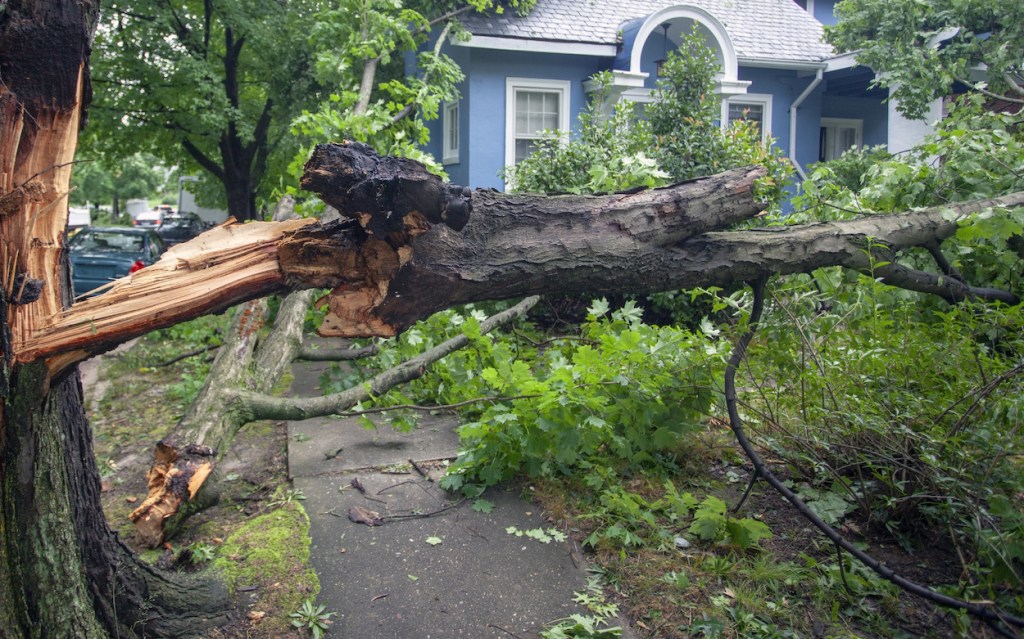The United States is grappling with a sharp rise in natural disasters, including wildfires, an active hurricane season, floods, tornadoes and mudslides. The mortgage industry must be proactive in examining programs that can help borrowers recover from — and remain resilient to — disasters like these. After a natural disaster, the dream of homeownership is shaken as people across the country face the challenge of rebuilding their homes and their lives. A strong forbearance program, like the one mandated by the CARES Act as a result of the COVID-19 pandemic, should serve as a blueprint for helping those impacted by natural disasters.
While the pandemic was unprecedented for many reasons, it was also the first disaster in a long time that was not limited to a specific geographic area. The mortgage industry immediately recognized the need to help borrowers who were impacted by COVID-19 and would be unable to make their mortgage payments as a result. The CARES Act allowed for mortgage forbearance for any impacted borrower across the nation. Under the legislation, approximately 7.2 million homeowners took advantage of forbearance, with 1.75 million homeowners remaining in active forbearance plans almost a year and a half later.
The program’s unique attributes have made it incredibly customer and servicer-friendly. This borrower-oriented model could help the industry design a framework for any natural disaster in the future.
Step One: Standardization and communication
Most importantly, the CARES Act created a standardized relief program for homeowners with mortgage loans backed by the Government Sponsored Enterprise (GSE) housing agencies (Fannie Mae, Freddie Mac, and Ginnie Mae). This has led to less confusion and provides a more uniform customer experience.
One step in the right direction in the case of natural disasters would be to offer consistent disaster relief options across all government loan programs and entities. Having a uniform playbook for helping customers in the midst of natural disasters can help servicers better meet the needs of those affected. For example, having a standardized framework for deferral payment plans, guidance on how to receive disaster relief funds, and information on how insurance can be applied and distributed makes it much easier for servicers to work with homeowners to outline ways that they can receive assistance and relief.
Not only can this be applied during active forbearance, but also as borrows exit that plan. Recognizing the wide range of positions that borrowers may be in, coming out of forbearance isn’t a one-size-fits-all solution — nor should it be, as every borrower is unique. What matters most is that the theme and consistency outlined by the GSEs are standard throughout the market thanks to the CARES Act. After analyzing a borrower’s circumstances, servicers are able to determine the best program for everyone.
Technology to make for a paperless forbearance process
The mortgage industry is inundated with paperwork, and some services offer limited options to efficiently digitize and process lending and servicing documents. During a crisis, this has the potential to unfold into an even more complicated process. Access to the right technology can help streamline the process and digitize some of the paperwork needed to help homeowners in need.
Thanks to technology, customers are able to locate their history, documents and payments within the same system — organized and accessible by the press of a button. During the pandemic, opting into forbearance didn’t require the necessary paperwork. When a homeowner was impacted, all they had to do was declare financial hardship due to COVID-19 and that was qualification enough. When natural disasters strike, there is an opportunity for the mortgage industry to take these same precautions and rely on technology to ensure that anyone in a FEMA disaster zone has access to support without burdensome documentation.
Meeting the customer where they are
Above all, the true hallmark of the CARES Act boils down to one word: communication. The key to success is meeting the customer where they are, and in this case, that’s in a disaster zone. Servicers have an opportunity to step up, do more for homeowners and continue to communicate a homeowner’s available options during times of need. In following the steps laid out by the CARES Act and using this program as a uniform playbook for helping customers in the midst of natural disasters, servicers are better able to meet the needs of those affected by disasters in a clear, fair and transparent way.
Most recently, as Hurricane Ida hit the Gulf Coast states, many homes were damaged, regions of Southern states were flooded due to the resulting tropical storms and homeowners needed fast disaster relief options. Mortgage assistance and disaster relief options were quickly available from Fannie Mae and Freddie Mac. With a streamlined process in place like the CARES Act program provided, servicers will be able to more efficiently assist homeowners during their time of need in future crises.
As we move forward and build on this foundation set by legislation, the mortgage industry framework could eventually expand to include options for deferred payment plans, how to receive disaster relief funds, and how insurance can be applied for and distributed. The steps outlined by the CARES Act emphasizing communication are a way to ensure we are helping homeowners at their most vulnerable and keeping the dream of homeownership alive.





